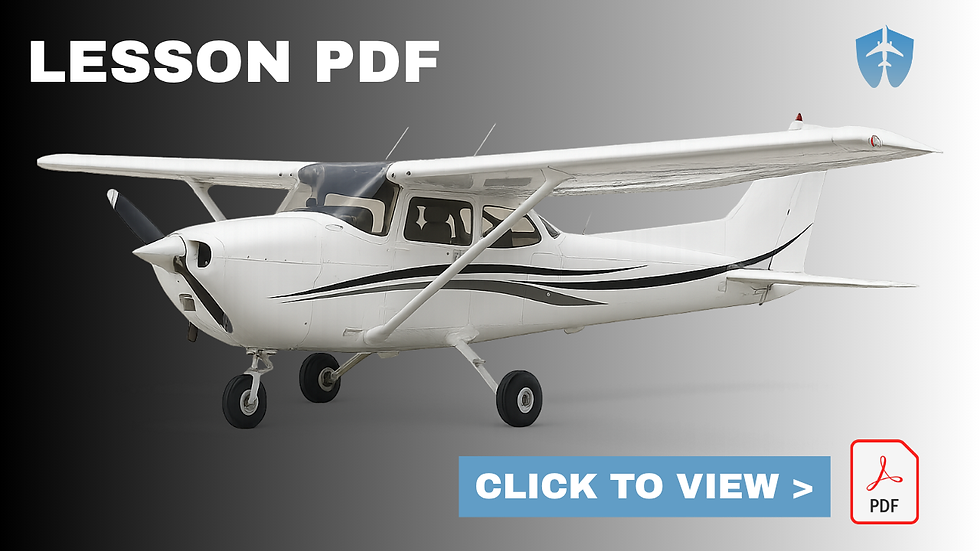Instrument Flying Basics
- wifiCFI

- Dec 31, 2021
- 1 min read
Updated: Aug 6
Scroll down to study the lesson video, podcast, PDF document, quiz, and flashcards.
ADDENDUMS
There may be updates and/or corrections for this lesson (Active: 0). View Addendums >
KNOWLEDGE VIDEO
The video below contains the knowledge areas and diagrams of this maneuver.
EXECUTION VIDEO
The video below is an in-flight example of the execution for this maneuver.
Start: Description and Key Items
2:20: In-Flight Demonstration
PODCAST
LESSON QUIZ
Click the picture below to take the lesson quiz. You can send the quiz results to your email or to your flight instructor's email by entering it in the "Instructor's Email" field seen on the start page.
FLASHCARDS
You can adjust your flashcard settings with the 3 lines in the upper right hand corner.

